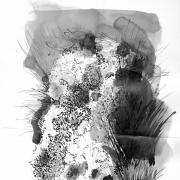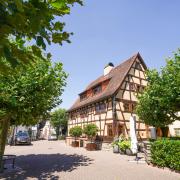Nic Saintey of Bearne's Auctioneers discusses the evolution and history of the wine bottle.
Although in my mid 40s, I've finally accepted the fact that I may now be officially 'old'. In conversation with my daughter, I tried to explain to her that when I was a boy, I could take my empty fizz bottle back to the shop and get money for it. Despite being a savvy teenager born into a world where recycling is the norm, she couldn't fathom who would want to drink from someone else's dirty old bottle without melting it first, let alone give me cash for one. It's not just her; I only have to mention milk bottles, foil tops and blue tits, and I can detect younger colleagues rolling their eyes and drifting off.
It seems that, despite the encroachment of boxes and cans, the only product that has consistently stuck with glass is alcohol, and wine in particular. Perhaps it's due to the fact that wine remains something of a luxury item, requiring suitably grand containment. Looking at modern mass-produced bottles, it's hard to believe that they where once considered high kudos items - objects fit solely for the gentry, wine merchants and some of the better city taverns.
The earliest of these gentlemen's bottles were hand-blown, one at a time, and no two were exactly the same weight, thickness or size. They were dark green in colour, almost black, but in a good light one could still view the contents. They had a 'kick up' under the base, which was a concave dome to provide strength, and a 'string' rim (a pronounced ridge at the top of the bottle) that enabled a cork to be tied down, as in the earlier 17th century it wasn't yet fashionable to lay bottles on their sides.
Indeed, these bottles weren't intended to retail with their contents, as the previously mentioned inconsistencies in construction would have meant that they contained a rather unpredictable volume. They were used in a manner not unlike a decanter. The 5th Earl of Bedford is recorded as purchasing several hogsheads (250 litres each) of 'Shably' for his cellar in 1658, while at the same time investing in 12 dozen bottles to accommodate it. Nowadays, one can't quite imagine the necessity of mentioning such a thing in a contemporary diary, but even Samuel Pepys felt it worthy of record that in 1663 he visited The Mitre to see his personal bottles being filled.
The first verifiable mention of domestic bottle production seems to have been something of a catch-all when, in 1632, Sir Robert Mansell acquired the sole patent for the making of 'broade glasses, looking glasses, bottles or vessells made of glass of any fashion, stuffe, matter or metal whatsoever'. Before the century ended there were 38 bottle houses in the British Isles producing in excess of two million bottles, each one at a time. It is perhaps fair to mention at this point that, while the earliest 'mass-produced' bottles were of a free-blown 'shaft and globe' type - a sort of balloon with a long neck - an effort towards continuity and speed was made with the advent of the so-called 'onion' bottle, a short and squat version of the same, which was the result of a cup-shaped wooden mould that enabled glass-blowers to produce a consistent size and shape, but not thickness, of bottle.
I can't speak for you, but in spite of this seemingly rudimentary advance, two million handcrafted bottles seems to me a gargantuan amount. Bottles weren't cheap - the Earl of Bedford paid 3s 6d for a dozen plain ones, with the application of a circular seal bearing his crest adding 5s per dozen. As a status symbol, and to prevent theft, this extra expense was considered worthwhile, even when you consider what an unholy equation alcohol, brittle glass and merrymaking can be; indeed, the Earl's predecessor, the 2nd Duke, suffered the loss or breakage of 19 dozen bottles at his inaugural banquet as a Knight of the Garter!
The earliest existing sealed bottle is marked for John Jefferson and is dated 1652, although a much earlier bottle, enigmatically marked for 'CBK 1562', is mentioned in an early polemic as being unearthed in Chester in 1939, but alas this seems to have gone the same way as many of the Earl of Bedford's bottles and is now lost to time.
Practicality rather than beauty provided the next advance in shape for the wine bottle, when the circular 'onion' bottle was flattened in the early-to-mid 17th century to produce an oval 'bladder' wine bottle, which produced a smaller footprint and allowed the storage of more bottles per square foot when stood upright and tightly packed on cellar shelves. This was during a period when it was still customary for gentlemen of a certain stature to entertain and drink in the confines of their private cellars rather than in the dining or withdrawing room.
All subsequent changes during the mid-century seemed equally as subtle. The 'mallet' was a squat cylindrical shape but with a longer, more defined neck, which neatly provided the transition towards the cylinder-shaped bottles we recognise today.
The developments in bottle shape perhaps coincided with a change in cellaring practices, when it became the norm to store wine in bottles and therefore lay them horizontally rather than on their bases. By the end of the 18th century and into the 19th, the 'cylinder' was the shape of preference. It is here, perhaps, that the transition into consistency and mass production finally arrived with the advent of a three-piece iron mould patented by Henry Ricketts of Bristol.
As I write, £20,000 has just changed hands for an early onion bottle - with the unusual addition of a handle - that was unearthed in the Westcountry. A princely sum for what is, in essence, only packaging. However, these practical objects with a specific purpose are to me the epitome of a craftsman's skill, each one made individually but with subtle differences and characteristics that make them attractive and beautiful things as well as important items of social history. I think that if René Lalique can get away with injection-moulded statues, bowls and vases as objets d'art, then these bottles should surely be seen as worthy works in their own right.


























